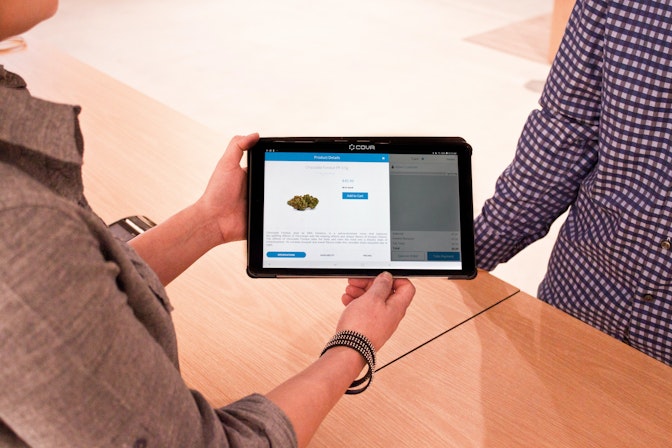The greatness of mobile cannot be overstated. It has had a profound impact on the way we live, work, play, and socialize. But who could have believed there would come a day when we’d be using it to buy clothes, groceries, and everything else?
Say hello to mobile commerce!
The convenience of shopping on something buyers regularly use is the next big thing. In a survey conducted last year, 71.6 percent of people said they shop via mobile at home, during their free time, or while traveling. Mobile is the direction in which consumer spending habits are headed, and it won’t be long until facilitating commercial transactions on smartphones and other handheld devices become a business necessity.
In this post, we’ll take a detailed look at what mobile commerce is, the benefits of mobile commerce, and some platforms you can use to get your business mobile-ready. You’ll also learn the difference between ecommerce and mcommerce, and what trends are poised to shape the mobile landscape in the coming years, like QR code generators and more.
Let’s jump in, shall we?



What Is Mobile Commerce?
Mobile commerce – or mcommerce – is the act of buying and selling products online through mobile devices. Unlike ecommerce, where the focus is on a company’s online store, consumers shop from brands and retailers through several channels on their phones, including social media, mobile commerce apps, mobile websites, and more.
With the rise in tablet and smartphone ownership, mobile commerce is becoming more and more mainstream.
→ Click Here to Launch Your Online Business with Shopify
According to eMarketer’s estimates, the mobile share of total ecommerce sales in the U.S. will increase from last year’s 63.5 percent to 67.2 percent in 2019. In terms of dollar value, mobile will generate a staggering $2.32 trillion in online sales.
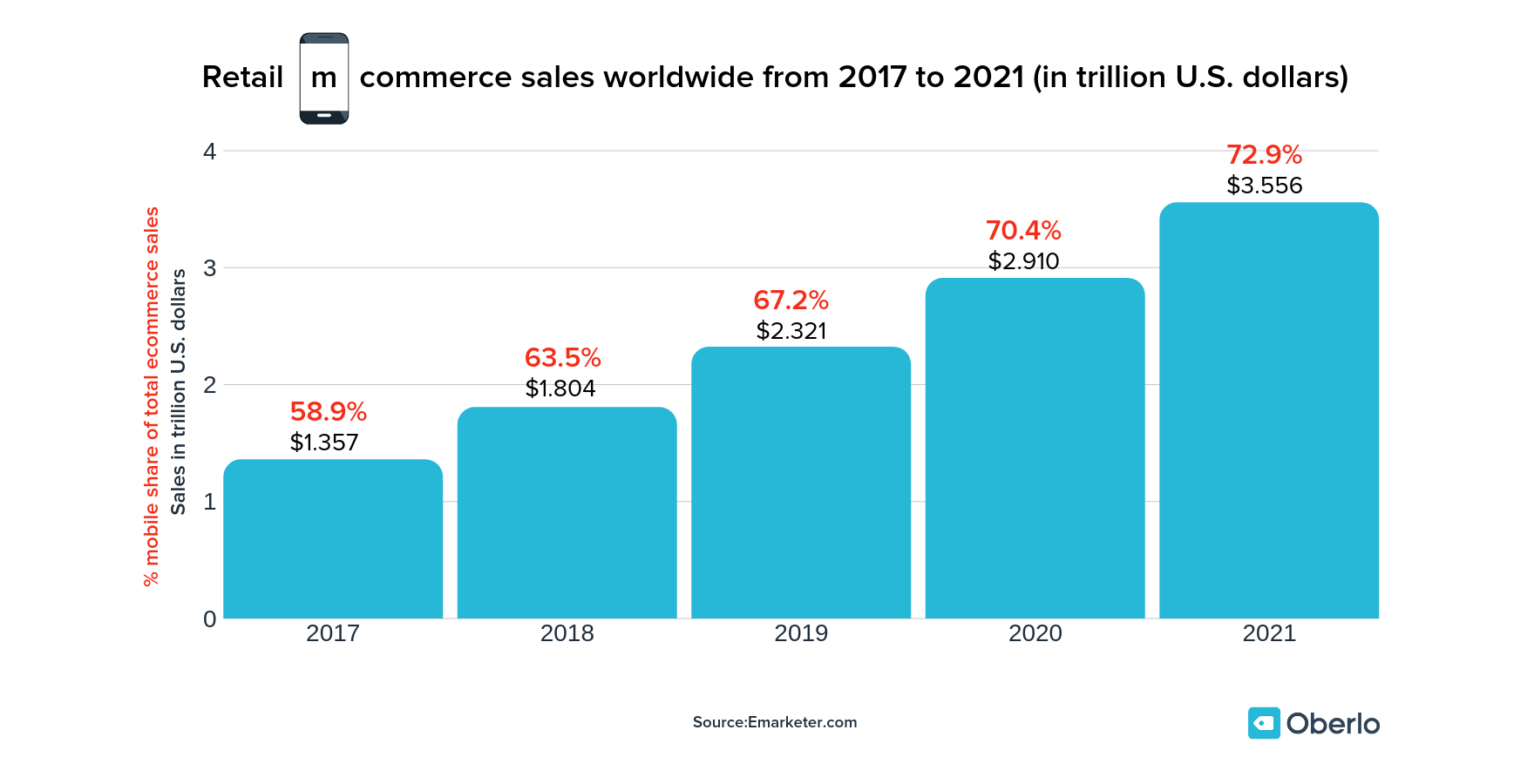
Still not impressed? Here are some additional stats on mobile commerce:
- People who shop on mobile spend twice as much as other consumers
- Mobile sales accounted for 66 percent of sales from Shopify merchants’ proceeds during the Cyber Monday and Black Friday weekend last year
- 80 percent of consumers use their handsets inside a store to either compare prices, look up reviews or find alternative brand outlets
These stats are a clear indication that people have warmed to the idea of making electronic transactions on their mobile devices, which means more opportunities for businesses willing to adapt.
Mobile Commerce Applications
Mcommerce isn’t just limited to the buying and selling of goods through mobile-specific channels. There’s a host of other mobile commerce applications you can take advantage of, including:
- Mobile bookings
Consumers can book event tickets via their smartphones. Brands can take bookings through a dedicated mobile app or website and send a digital QR-equipped ticket directly on the customer’s mobile phone. Everyone from concert organizers to sporting venues can take advantage of mobile bookings.
- App-specific marketing and discounts
Letting mobile users learn about discounts, discover loyalty programs, and locate nearby stores is a huge business opportunity. Dunkin’ Donuts, for example, lets its customers use the Dunkin’ Donuts Mobile app to earn loyalty points, find the nearest Dunkin’ Donuts store, and even place orders in advance.
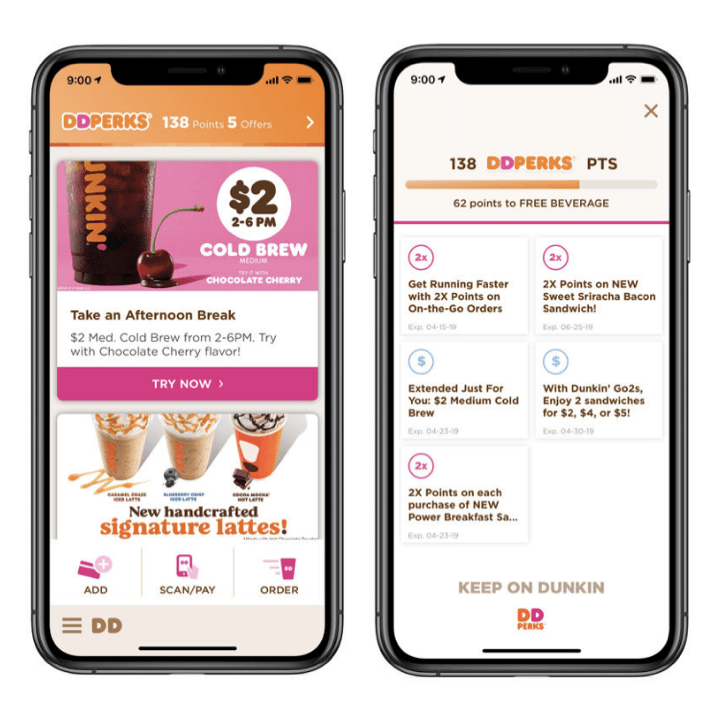
- On-demand solutions
On-demand mcommerce is on the rise after the success of Uber and other ride-hailing services. These on-demand solutions enable people to buy and receive services and products at a place and time of their choosing.
- Pre-orders
It’s also becoming common for people to pre-order items via mobile before they visit a store. This allows consumers to save, while retailers get to enjoy a sale and prep the product in advance. For example, Canadian retail company, Canadian Tire Corporation, allows people to shop for automotive parts and hardware via mobile, pay in advance, and pick up the product from their vendor’s location.
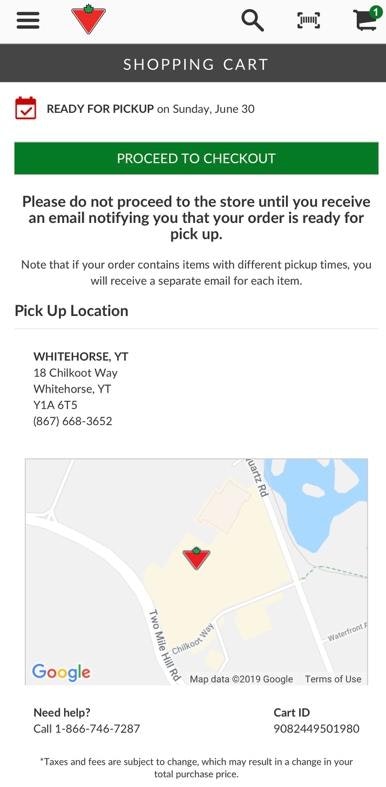
When you start with mcommerce, these are some of the important use cases that you must know.
For ecommerce merchants, mobile commerce applications like app-based discounting and advanced order placements can play a key role in enhancing the customer experience.
Benefits of Mobile Commerce
Here’s a quick look at the advantages of mcommerce that apply to both small and large businesses:
- Multiple payment options
Today, almost every mobile commerce platform offers a range of payment solutions, enabling you to make shopping convenient for the consumer. People can pay for the orders they place via their credit cards, PayPal, Stripe, or a digital wallet service like Apple Pay, Samsung Pay, or Shopify Pay.
The Shopify store, Brilliant Bicycle Co., offers both PayPal and mobile-first payment options to the people shopping through its mobile website.
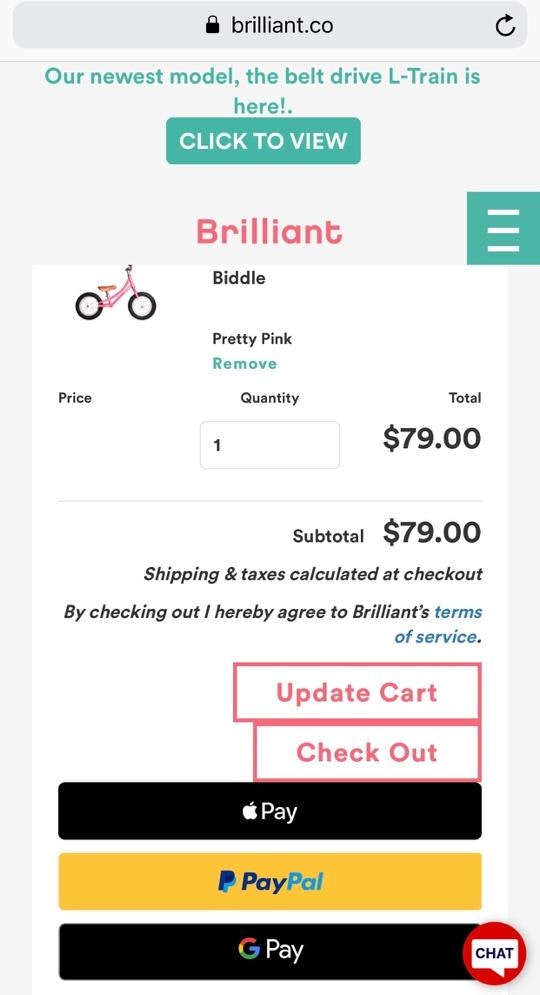
You could say that Brilliant.co really “gets” mobile payments.
- Ubiquity
With mcommerce, companies can connect with their target audiences electronically from any city/region/country in real time. There are no geographical or physical boundaries in place. In addition, the mobile’s GPS location system can be used to recommend nearby stores.
For example, you can send push notifications featuring deals and announcements to people who are within 5 miles of your store via a mobile app or SMS.
With convenience, speed, and personalization at the heart of mobile commerce, you can deliver an enticing shopping experience – better than the one you might offer on the web or in store.
- Omnichannel customer experience
Mobile commerce also makes it easy to merge online and in-store experiences. Using mobile-specific comparison pages, QR codes, and geo-fenced discounts, you can cater to the needs of the omnichannel customer. According to a survey of 46,000 shoppers conducted by the Harvard Business Review:
Only 7 percent of the people were web-only shoppers and 20 percent made purchases inside a store. The rest 73 percent, or the majority, used multiple channels during their customer journey, including mobile apps to download a coupon or compare prices. They’re referred to as omnichannel customers.
The key takeaway from the rise of the omnichannel customer is that your shopping cycle should merge the buyer experience across channels, including desktop, mobile, and any in-store placements. Luxury retailer Neiman Marcus, for instance, lets consumers use its “Snap. Find. Shop” app to take a photo of a handbag or a pair of shoes they like inside a brick-and-mortar store, which is then used to search the Neiman Marcus database to see if something similar is available to buy online.
If Neiman Marcus has a similar-looking product, consumers can immediately buy it through the app.
Limitations to Mobile Commerce
Just like anything, though, mcommerce is not without its limitations and challenges. It is then up to the adopters to find ways to overcome potential roadblocks. Common pitfalls include:
- Comparison shopping
One of the advantages of mcommerce is that it is easy for consumers to compare prices. But this cuts both ways for businesses. Since it’s so easy to compare costs online, it’s also easy for people to comparison shop.
For example, if you’re offering a T-shirt for $20, a potential customer only needs to spend a few minutes on his or her mobile to see if they can get a better price from someone else. The best way to counter this barrier to sale is to keep up with your competitors.
Do your own comparison shopping to find how much they sell similar products for and then find ways to compete. As an example, you can offer a complimentary item along with your product to portray higher value.
- Easy to get distracted
Mobile users are doing several different things at a time. It’s common for them to be on a call while scrolling through a brand’s app or ecommerce store. Or, a customer might land on your website and then quickly jump onto his or her Instagram profile to check out that new comment. With so much happening on mobile, it’s easy for users to get distracted.
To capture people’s attention in a distracted world, try generating a positive emotional feeling with your mobile app or promotion. For instance, you can surprise your customers with a freebie or a discount when they’re least expecting it.
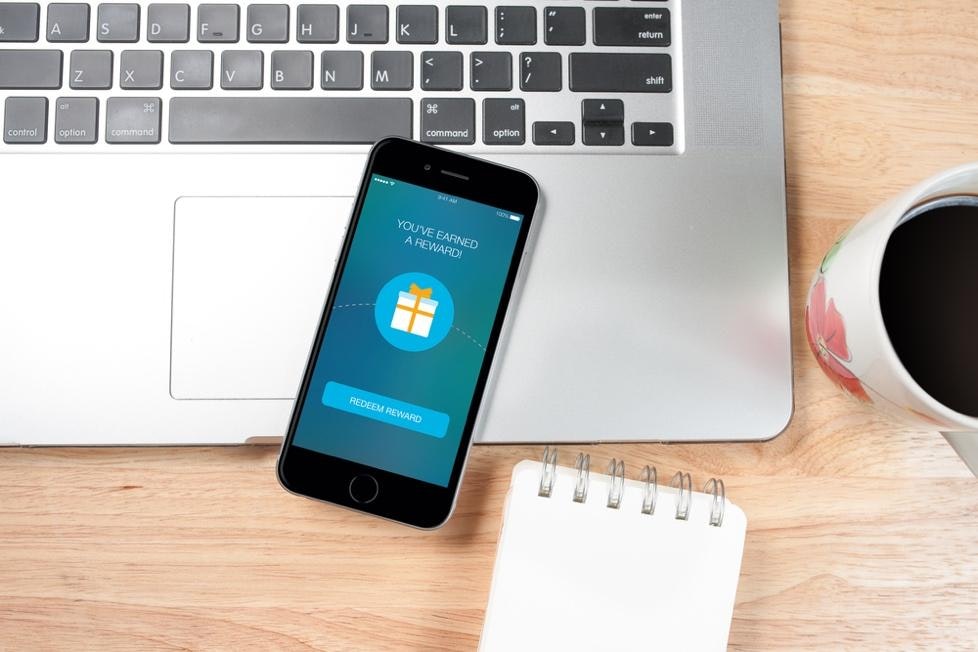
- Privacy concerns
When it comes to sharing their personal information via mobile, people are naturally concerned about their privacy. The fear arises from the incidents of database hacks that lead to fraudulent transactions. Also, hackers may release fake apps that seem to be genuine and use them to spoof customers’ data.
You can address these concerns by ensuring the mobile commerce solution or website you go with has security built-in. In addition, you can publish a privacy policy page and present users with a clear set of terms, so that they know how their information is being stored and shared.
Mobile Commerce App vs. Website
The first step to getting started is to choose the right mobile commerce platform. You can either go with a mobile app or a mobile website. Depending on the nature of your business and the route you take, there’ll be certain platform options available to you.
If you’re running an online store and decide to go with an app, you’ll have the option to use the native app of your solution provider. Shopify, for example, offers a mobile app that allows its users to manage products, process orders, and see live sales and visitor stats. Combine it with a Shopify theme that looks good on mobile, and you’re all set.
The other option is to create a custom-branded app. This is available to all types of businesses and doesn’t necessarily require you to hire a developer. With the right mobile commerce platform, you should be able to create an app yourself. Below are some options to consider:
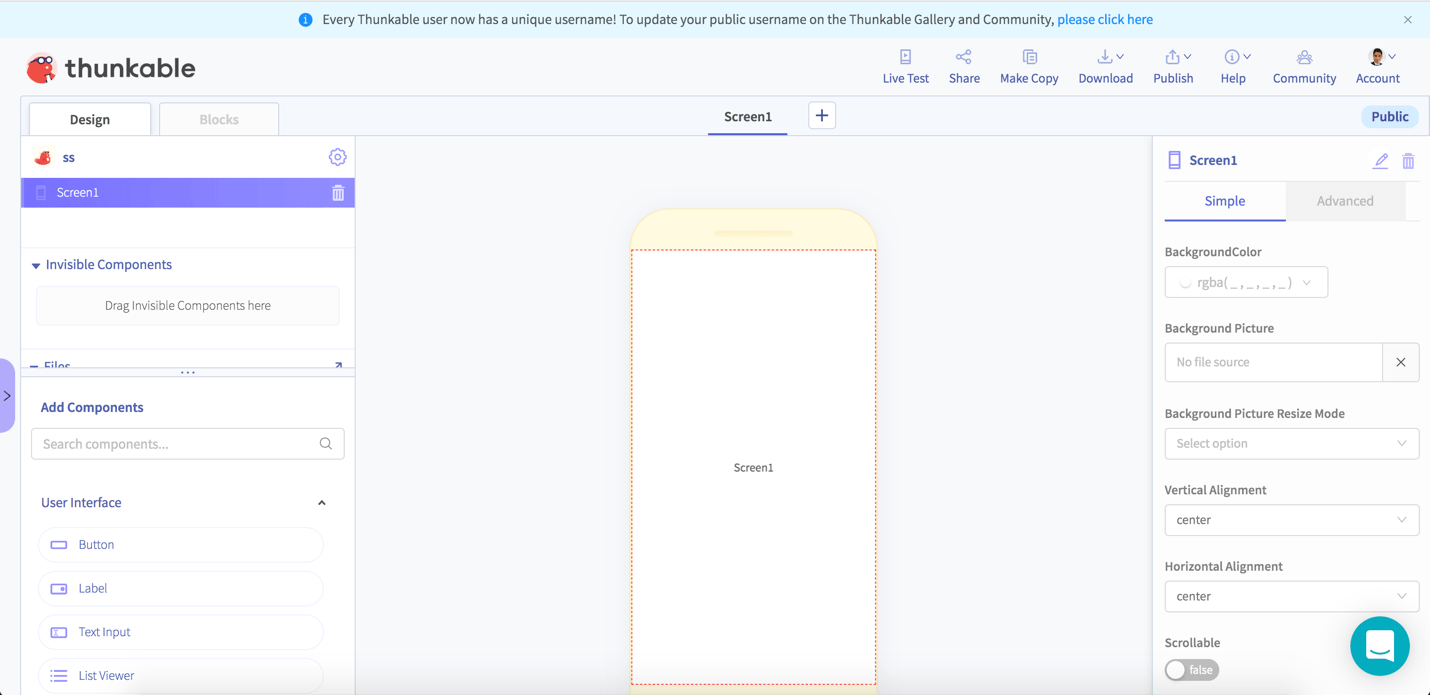
Thunkable lets you build native mobile apps that your customers can use to shop from your brand at any time and place. You just need to drag and drop the different elements and merge them together with blocks. The dashboard is user-friendly, and there’s also an active community that’s willing to answer any app-related questions you may have.
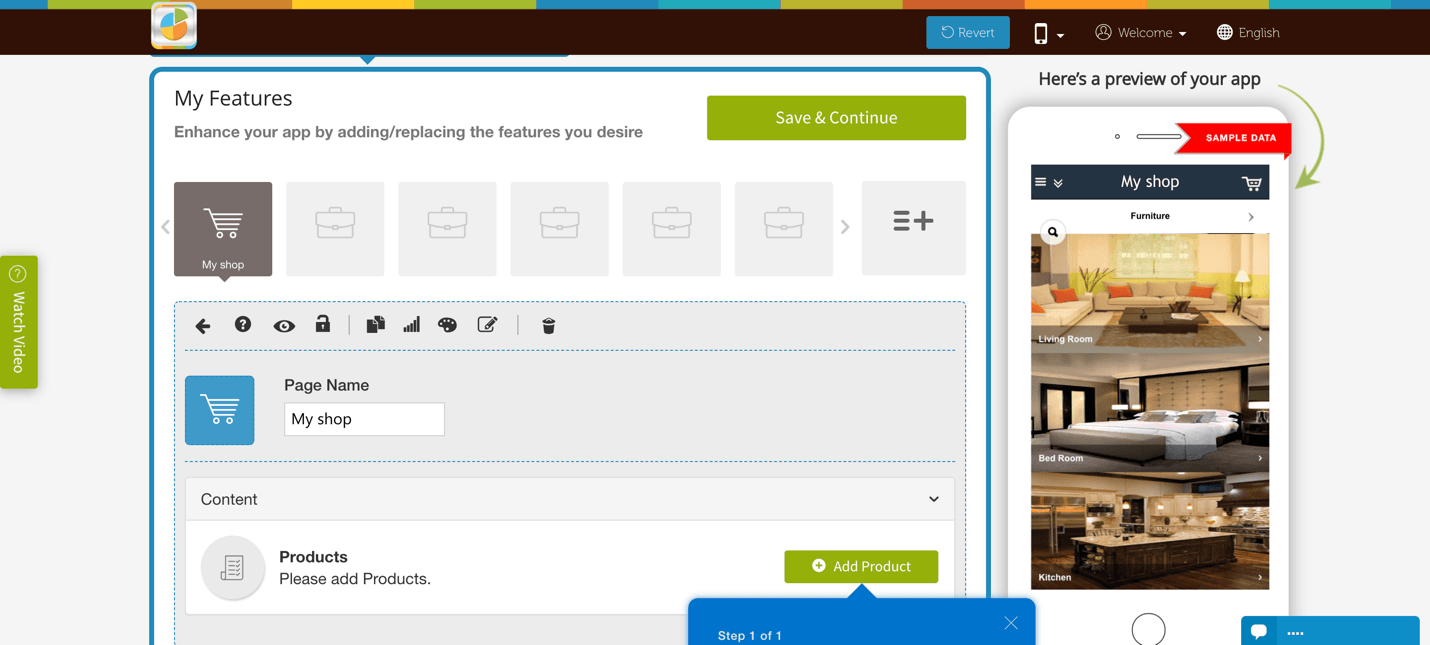
Appy Pie is a DIY mobile commerce platform that doesn’t require any programming skills and supports app creation for both Android and iOS. After you sign up as a user, you’ll just need to drag and drop components to customize your design. Notable features of this platform include the ability to monetize ads, track mobile users’ visits and send push notifications to engage potential customers.
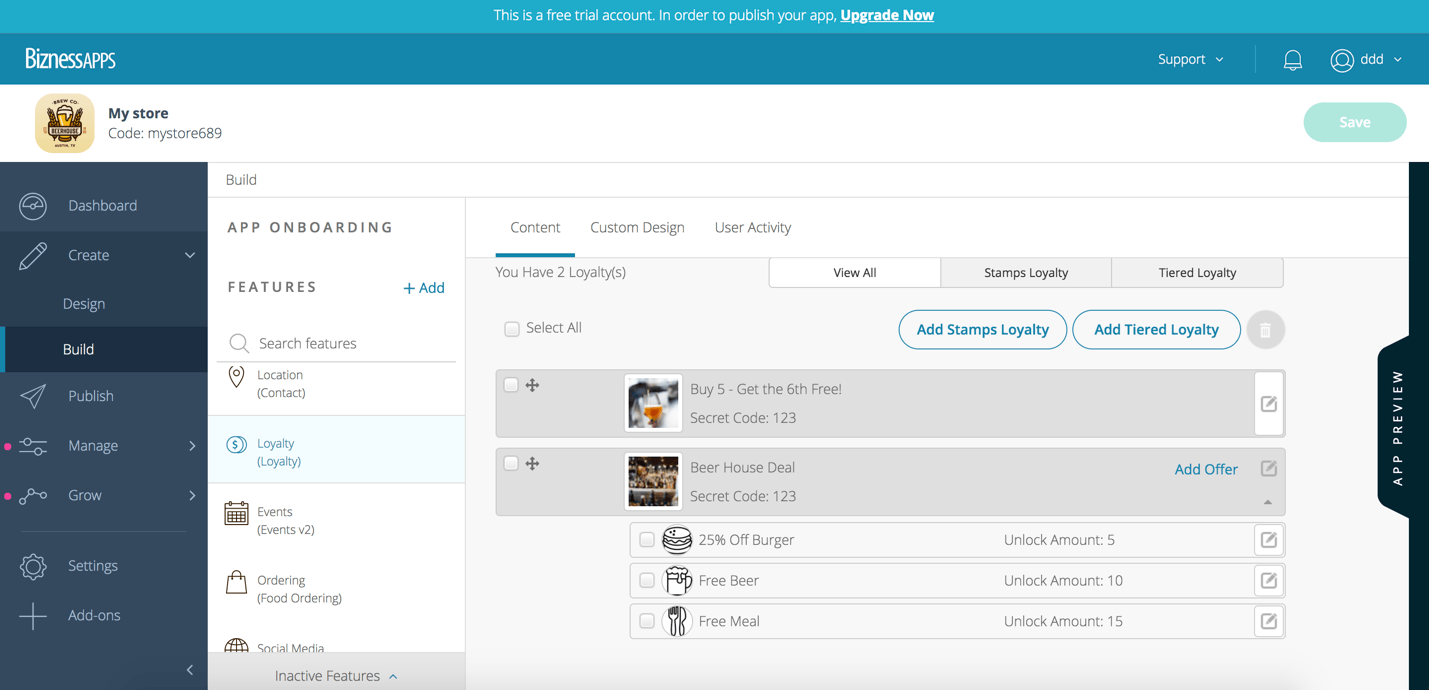
Bizness Apps calls itself the “No. 1 app builder for small business,” and it’s easy to see why. The company offers a drag-and-drop builder that’s extremely simple to use, as well as features that are tailor-made for small companies. You can use this tool to not only create a beautiful mobile app, but also build a loyal customer base, send app promotions, and strengthen your brand reputation with exciting mobile features.
Creating a mobile website
Above are some of the platforms you can use to create an app.
Alternatively, you can create a mobile website for your brand. All of the modern content management systems and ecommerce solutions offer responsive, mobile-friendly themes to help users create a website that looks just as great on a phone as it does on desktop.
However, choosing a mobile theme won’t change your site’s URL or redirect visitors to an exclusive mobile webpage. Also, your site will still be hosted on the CMS or ecommerce platform you signed up with.
For using the “m.mywebsite.com” URL and hosting your mobile website externally, you’ll need to use a dedicated mobile website builder. A good option is Duda. You can use it to create and edit your mobile website from anywhere. Duda has options to set up branded emails, manage SEO settings, and more.
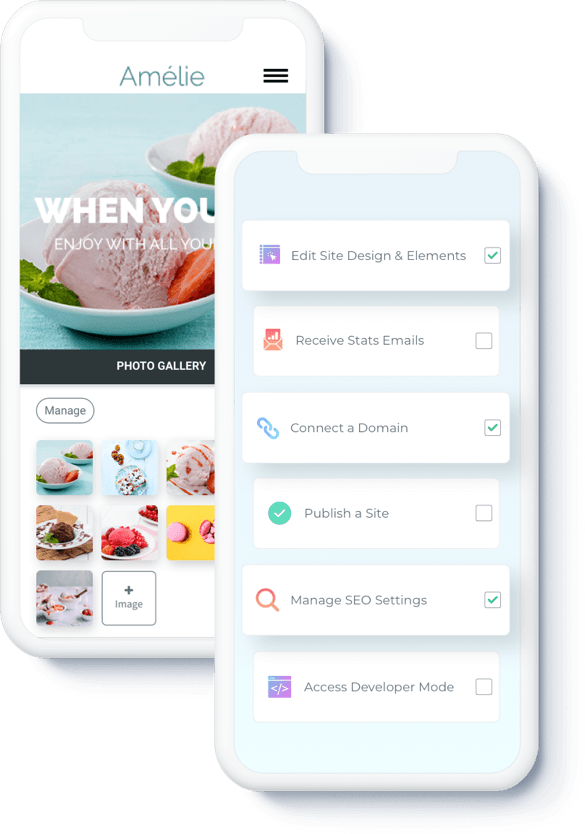
At the end of the day, whether you go with an app or a mobile website, you’re likely to experience an increase in sales.
Mobile Commerce Trends to Watch and Capitalize On
The competition for mobile shoppers’ business is on the rise, and with retailers and brands ploughing thousands of dollars into incredible mobile experiences, you need to differentiate yourself to stand out. A great way to do this is to capitalize on future trends.
With the steady growth of mobile technology and its complementary features, here are some trends you can expect to encounter this year and beyond.
- Chatbots
Powered by AI and designed to chat like humans, chatbots are enabling brands to reach and engage with customers in real time. Several big names like Pizza Hut, Starbucks, and Uber are using this technology on Facebook, WhatsApp, and other channels to suggest products and take orders from their customers. If that doesn’t serve as a testament to their popularity, 80 percent of businesses are planning to use chatbots by 2020, according to an Oracle survey.
But chatbots aren’t just limited to engaging customers via Facebook; one of the latest mobile commerce trends is to integrate them into a mobile app or website. Ecommerce entrepreneurs can take inspiration from health subscription service provider Babylon Health, which launched an app with an AI-powered chatbot that makes it simple for users to track their health and book appointments with a general practitioner without picking up the phone.

Creating an in-app chatbot requires development knowledge, but with the introduction of platforms like Instabot, you can expect it to become accessible to everyone.
- Location-based communications
Another trend to watch out for is location-based mobile marketing. Notification pushes based on people’s movements are enabling companies to give personalized offers to those who come within a certain distance of their product.
Incredibly, consumers already have a preference for location-based offers. Research from Kantar TNS reveals that 19 percent of consumers want location-based coupon services that notify them when they pass a favorite product in an aisle.
You can also jump on the location bandwagon by signing up to platforms like Localytics. The platform allows you to use geofences and beacons to trigger location-based communications. Push notifications can also be used to link customers to your mobile app or website.
- Augmented reality (AR)
Augmented reality technologies leverage the camera of the mobile device to reproduce digital content into the physical world. The advantages of AR for brands and retailers are numerous. The biggest benefit is that it allows your customers to see what your products look like in real life. This means they’ll be more confident in giving you their business as they can have peace of mind knowing what you’ve showcased is exactly the product they’re planning to buy.
Case in point: Top 100 retailer, Bob’s Discount Furniture, offers a shopping app that allows people to experience furniture in their houses through augmented reality. Customers are able to easily and quickly analyze the feel and fit of the products in the room they plan to furnish. (For more examples of how brands are using AR in the real world, check out this blog post.)
Fortunately, getting started with AR has become easier with the launch of platforms like Layar, which anyone can use to create interactive AR experiences.
Final Verdict
Incorporating mobile commerce into your online sales strategy will need to happen sooner than later.
It’s a matter of having the right knowledge and researching the features of different platforms to know what works and what doesn’t. By learning how mcommerce functions, using the right platform, and jumping on trends early, you’ll be able to gain an edge over your competitors.
Which mobile commerce strategies are you currently using to reach your customers? Let us know in the comments section below!






